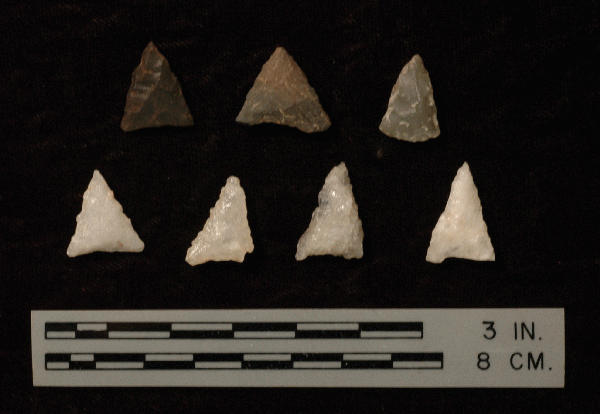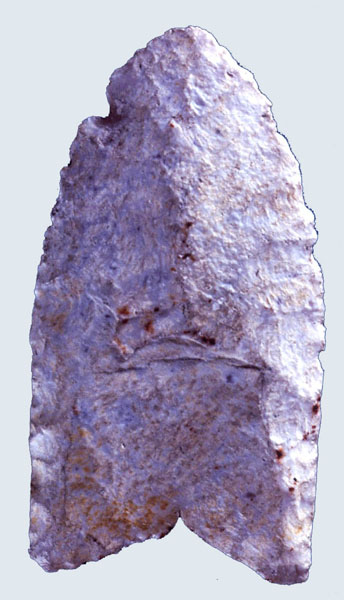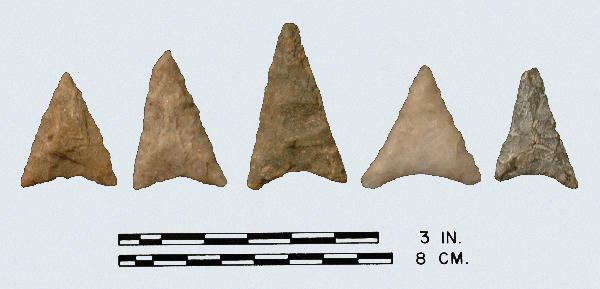
Clarksville: Top Row: chert, quartzite, chert; Bottom Row: all quartz.
Late Woodland
Defining Attributes
The Clarksville is a very small triangular point, equilateral in shape and almost always made from vein quartz.
Chronology
The Clarksville point dates to the Late Woodland period, 1400 to 1700 CE. Coe described this type in 1938 as being associated with the historic period in the Clarksville area. In the Roanoke Rapids Basin it was also found associated with the historic Gaston period (Coe 1964).
Description
- Blade: The blade is a small equilateral triangle. Some points are longer and more isosceles in shape. The equilateral shaped points have straight or slightly convex sides, whereas the isosceles forms have straight to slightly concave sides.
- Base: The base is straight or slightly concave.
- Size: Length ranges from 10 to 18 mm. with an average of 14 mm. Width ranges from 10 to 16 mm. with an average of 12 mm.
- Technique of manufacture: Well made and symmetrical with fine pressure flakes on both sides.
Discussion
The Clarksville point is similar to a style defined by Stephenson (1963) at the Accokeek Site which he calls the Potomac point type.
Defined in Literature
This type was originally defined by Coe (1964) based on points recovered from the Gaston site in the Piedmont of North Carolina.
References



